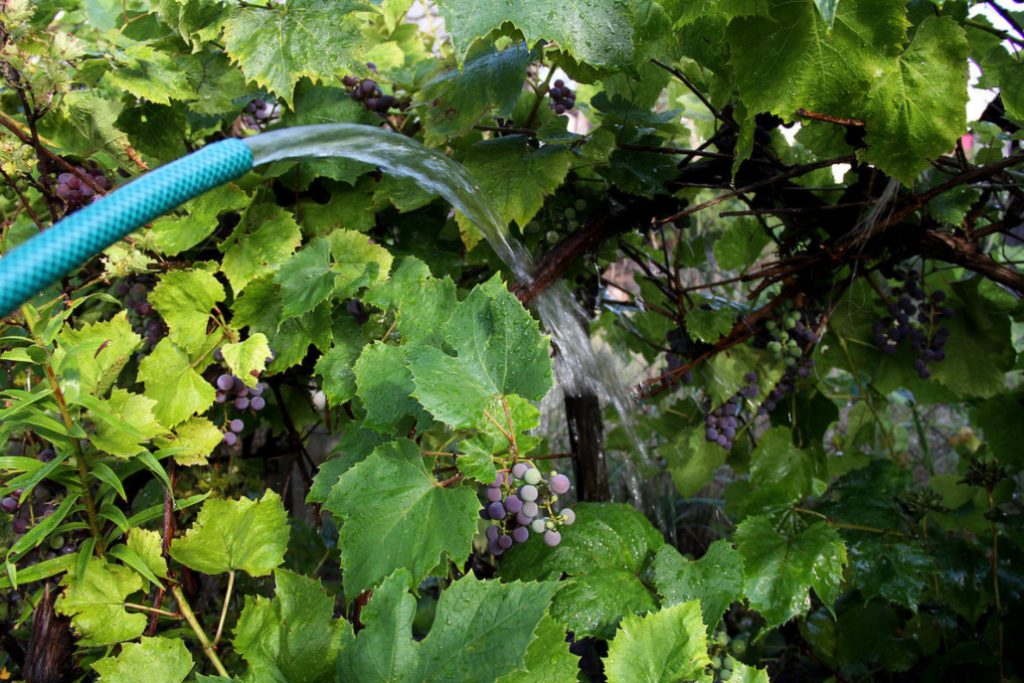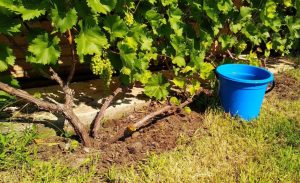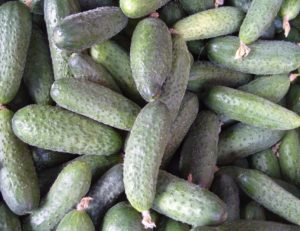It is obvious to anyone, even a novice gardener, that with a lack of water, no plant can normally exist, especially not give a good harvest. However, there is no universal schedule for watering plants in the garden. Here we will seriously and in detail consider the issue of irrigation. There is no point in pouring water to no purpose! Knowing what determines the need of grapes for watering, when it is necessary to do it, and in what period-not, you will be able to get the crops that your vine is able to give.
Need for irrigation
Experienced growers never water according to instructions. They look at specific bushes and the conditions of the year: if you don’t get enough, you won’t get the crop, if you pour it over, the berries may crack, and the vine will ripen worse. They have everything they need for irrigation, and this process takes a little work.
Summer residents often look at the sky. In many areas, water has to be extracted manually, and tomatoes and cucumbers are somehow closer and clearer. If you get too hot in the garden, you won’t have time for grapes! But you can’t argue with the sense of duty, and they pour something into the vineyard, too. And was it necessary? Watering (especially in the South) is the “richest source” of bad work. Consider the main conditions that are not harmful to take into account, so as not to water to no avail.
- Your ambitions and goals
A vineyard grown for its own needs, in a normal year and in the South, can do without watering. It is enough to reduce the load of bushes and cover the ground with plant remains. The market vineyard should give the maximum. It is watered strictly at the right time and in the right amount.
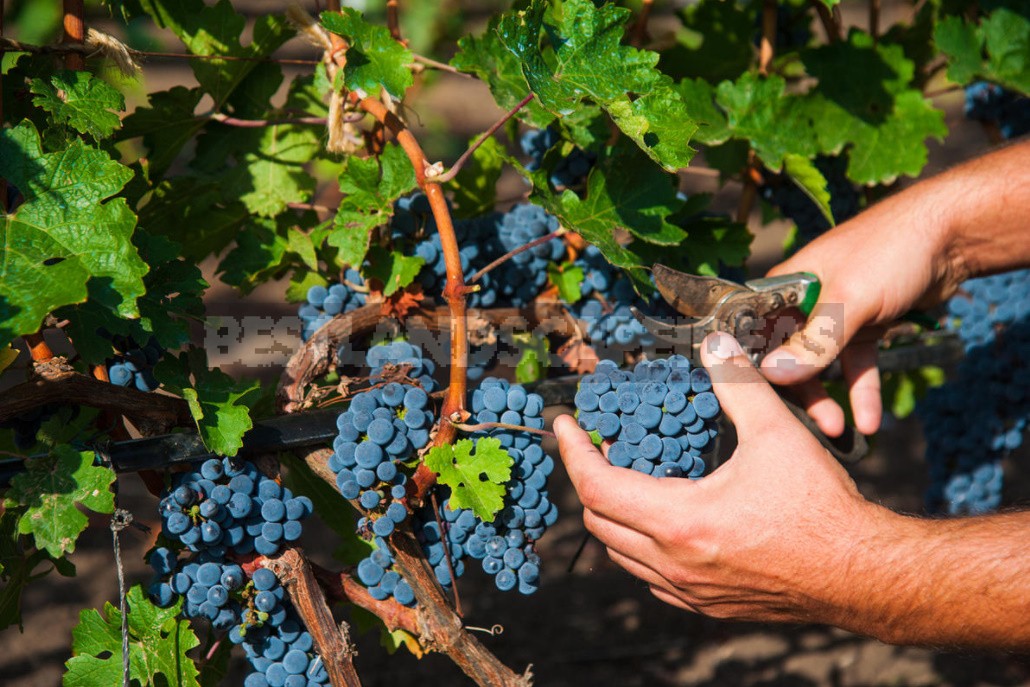
- The contents of the soil
Thick organic mulch stabilizes soil moisture the most. For summer residents and idlers — the perfect way out! It reduces the need for watering by half at least. The mulched area in the “cloudy zone” on permeable subsoil can not be watered at all.
On the contrary, the bare soil reduces watering to almost zero. It evaporates water faster than it absorbs it. For reference: a large and heavy bucket of water poured over a small square meter is a maximum of 3-4 cm of wet soil! In the South, this bucket goes up in the air in a day, two at most. It is also important that the salts poured with water remain in the soil.
- Irrigation method
Subsurface irrigation — in sheltered trenches and pits-requires at equal effect 2-3 times less water than irrigation on the surface of bare soil.
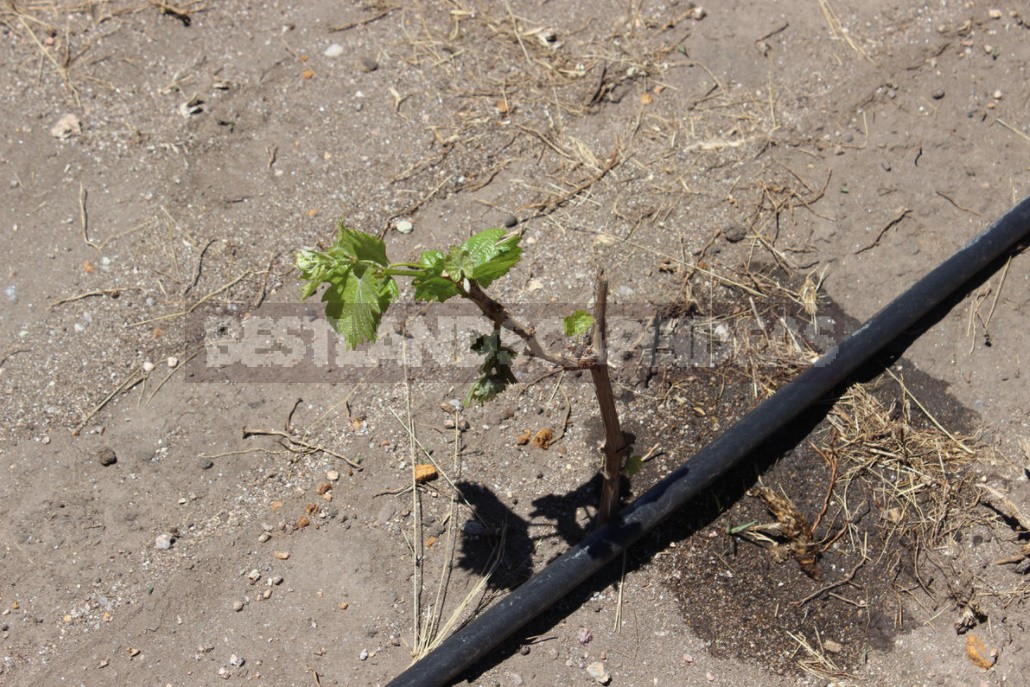
- Climate
Southern vineyards with open soil in a normal year are watered 3-4 times, and Northern vineyards-once or twice. In the “cloudy zone” grapes do not need watering, except in the driest years.
- Soil and subsoil
The permeable subsurface in the South is an important source of moisture. If the ground water is not far away, the grapes can do without watering. In the Northern zones, the subsoil is too cold, and the roots do not descend into it. Fortunately, there is more precipitation in the North.
- Weather
After a heavy, prolonged rain that reached the roots, southern grapes do not need watering for at least 2 weeks, and under mulch — a month. If the autumn and winter were dry, spring watering will be useful during the awakening of the kidneys.
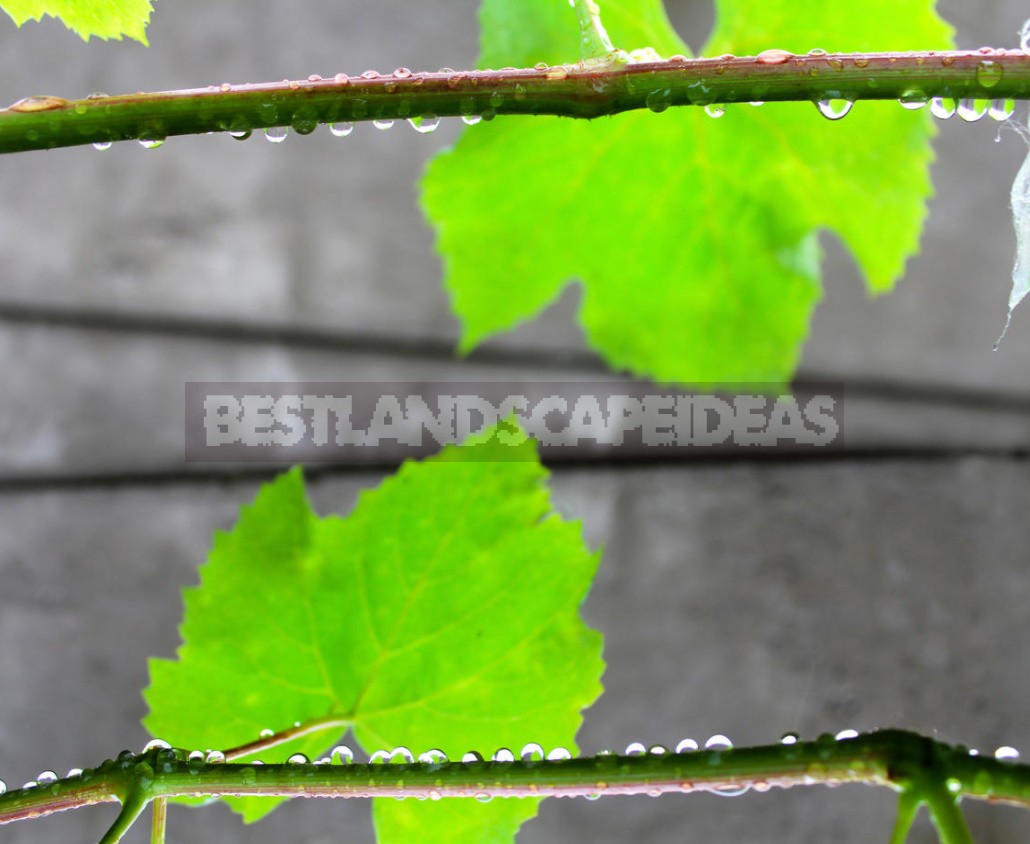
- Constructions
Grapes that spread their roots under the yard’s blind area, clinging to the Foundation, growing next to a summer shower, drain, stream, usually do not need watering. And if he is “lucky” to be near a sewer, a toilet pit, near a chicken coop or cowshed, he begins to fatten even from excess nitrogen.
- Varieties
Large-fruited table grapes typically require additional watering during the ripening of the berries. The early ones manage two waterings in the summer, the middle and late ones — three, although if August is dry, the fourth one is not harmful for the late ones. Technical varieties are slightly less affected by lack of water during overloading than table varieties.
- Rootstocks
‘Cober 5BB’, ‘SO 4’, ‘Krechunel-2’ and other rootstocks with the participation of the American species Vitis berlandieri develop very powerful roots. The bushes grafted on them are more resistant to drought.
- Bush load
Water requires not only bunches, but also shoots, even barren ones. Roughly: as much as the Bush is overloaded with shoots and clusters, so much it suffers from a lack of moisture, and so much more of it needs to be given. However, if it is not cut at all, no watering will help to preserve the quality of the crop, the fruitfulness of the eyes, the strength of the vines and winter hardiness.
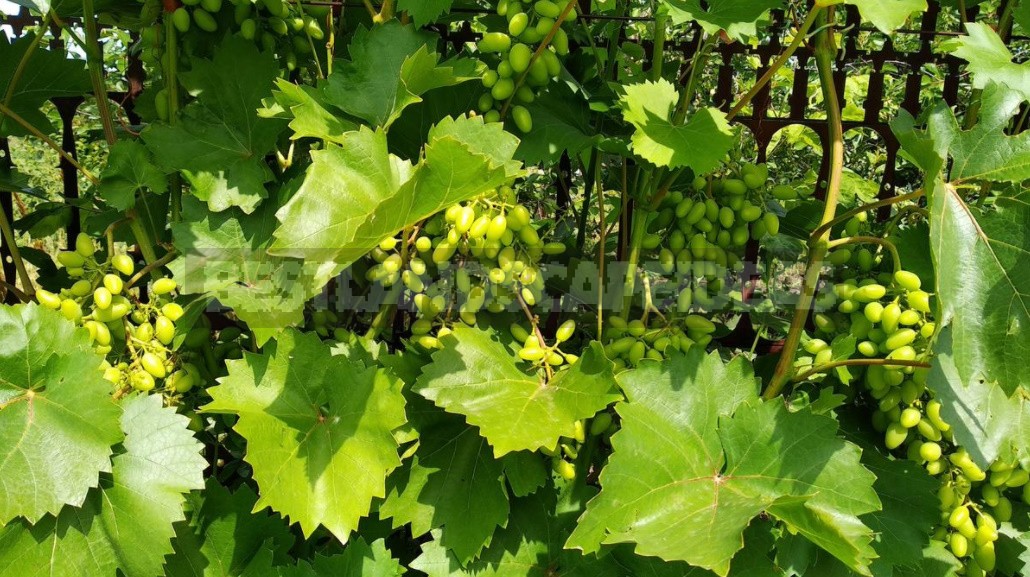
Watering at the wrong time-watering in harm’s way
Most of the water (50%) grapes spend on filling berries. If there is a lack of moisture at this time, the berries can harden and stop growing. The least amount of water (5%) is consumed during flowering.
About 20% is spent on spring growth of shoots, and half of this water is spent on evaporation from the soil surface that is not yet shaded. Before flowering, the grapes have time to grow half the growth and use up almost the entire winter supply of moisture.
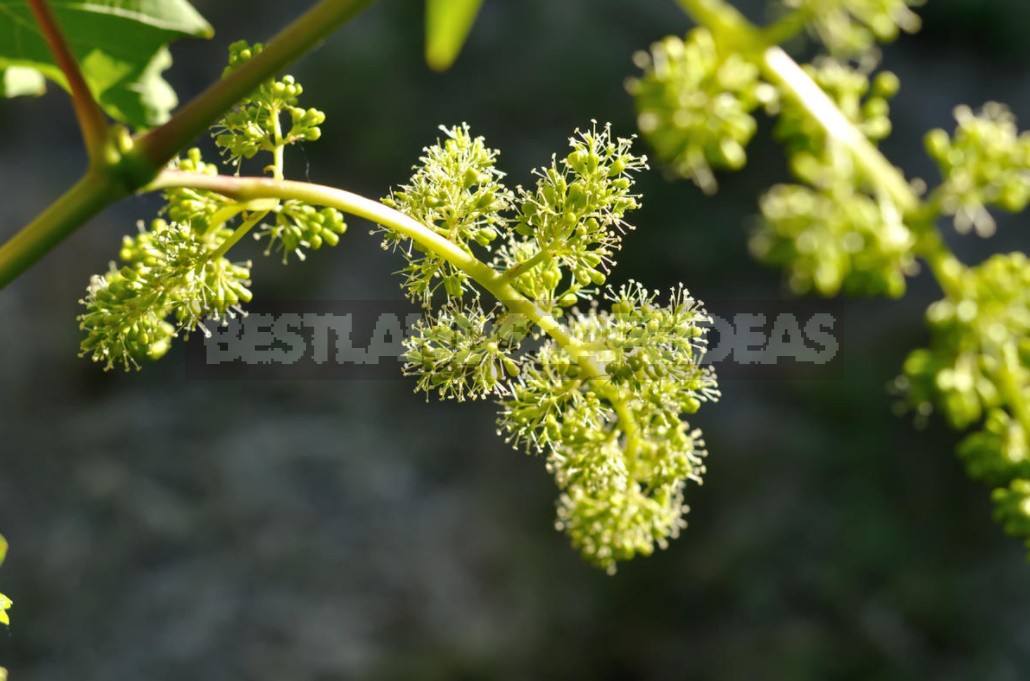
The autumn ripening of berries and vines takes 25% of the water. In General, it is said about grapes: it is better to short-fill than to pour. It is definitely better not to water than to water at the wrong time: excess moisture during flowering and ripening of berries can hurt more than its lack!
